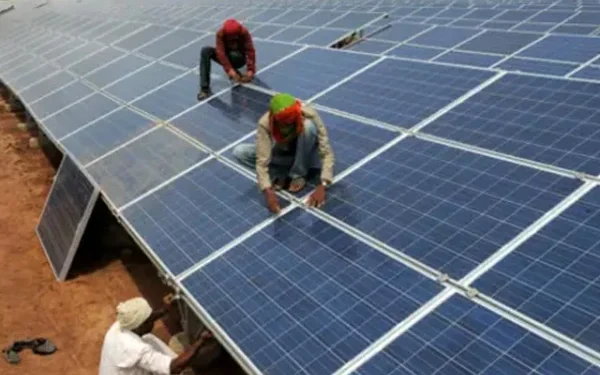ISLAMABAD – Pakistan’s ambitious journey toward a clean energy future is faltering due to a combination of policy reversals, outdated grid infrastructure, and poor strategic planning. Despite an initial surge in solar energy adoption, the recent rollback of key incentives has shaken public trust, discouraged investment, and put the country’s energy sustainability goals at serious risk.
At a time when most nations are embracing renewable energy to reduce dependence on fossil fuels and combat climate change, Pakistan appears to be moving in the opposite direction. Experts warn that unless the government rethinks its approach and develops a coherent, long-term energy roadmap, the country’s energy crisis may deepen further.
A Once-Promising Solar Surge Now at Risk
Over the past several years, solar power emerged as a beacon of hope in Pakistan’s troubled energy landscape. The government had promoted rooftop solar systems through net metering incentives, encouraging households and businesses to invest in renewable energy and become prosumers—both consumers and producers of electricity.
From 2022 to 2024, solar adoption in Pakistan saw remarkable growth:
- The number of registered net metering customers crossed 280,000.
- The installed solar capacity reached 2,813 megawatts (MW).
- Businesses and households were saving on electricity costs while contributing clean power to the national grid.
However, this upward trajectory is now being threatened by sudden policy changes, particularly a reduction in net metering compensation rates.
Net Metering Rollback: A Policy U-Turn That Sparks Outrage
In a controversial move, the government slashed the net metering rate from Rs 27 per unit to Rs 10, drastically lowering the financial return on solar investments. The decision has triggered outrage among the general public, energy stakeholders, and environmentalists alike.
Mian Sohail Nisar, Patron-in-Chief of the Pakistan Industrial and Traders Associations Front (PIAF), condemned the move:
“The transition to solar energy, once hailed as the foundation of Pakistan’s energy independence, has now been painted as a burden by policymakers. This abrupt policy reversal undermines investor confidence and erodes public trust.”
Many households had invested significant sums—often with bank loans—based on the previous incentives. With the drop in rates, return on investment timelines have lengthened, and financial viability has been severely compromised.
Grid Infrastructure: The Silent Crisis
Pakistan’s energy generation capacity has technically surpassed 46,000 MW, while peak summer demand hovers around 29,000 MW. Yet the country still suffers from load-shedding, power outages, and inefficiencies. The underlying cause? A decades-old, fragile transmission and distribution (T&D) system that is incapable of handling current loads—let alone integrating decentralized energy sources like rooftop solar.
According to a former power sector official, the problem isn’t solar energy, but the failure to modernize the national grid.
“We neglected grid upgrades, and now we’re blaming solar users for a financial imbalance that is the result of our own mismanagement.”
The grid’s inability to absorb and distribute surplus solar energy has led to a loss of efficiency and has caused friction between distribution companies (DISCOs) and solar customers.
Distribution Companies Under Financial Strain
Another core issue driving the rollback of solar incentives is the financial instability of electricity distribution companies (DISCOs). With more solar users relying less on the grid and even selling excess electricity back, DISCOs have seen a decline in revenue.
In 2024 alone, it is estimated that:
- Rs 159 billion in additional costs were transferred to grid-dependent users.
- This cost imbalance is projected to grow to Rs 4 trillion by 2034 if net metering policies remain unchanged.
Instead of overhauling the business model of these state-run DISCOs or addressing systemic inefficiencies, the government appears to be penalizing renewable energy adopters, which experts say is a short-sighted and counterproductive strategy.
Gross Metering: Another Unclear Transition
Some reports suggest the government is considering shifting to a gross metering model, where all generated electricity is sold to the grid, and users buy electricity at standard rates. However, this policy has not been clearly communicated or phased in, leaving solar users confused and uncertain.
Many fear that smart meters may be remotely reprogrammed to reflect the gross metering model without customer consent, raising legal and ethical concerns.
Absence of a Comprehensive Energy Strategy
Farid Hussain, a respected energy analyst, stressed that Pakistan’s energy sector is plagued by reactionary, piecemeal policies rather than a coherent national vision.
“Our biggest failure is the absence of a comprehensive, integrated, and realistic energy roadmap. We cannot expect long-term results from short-term fixes.”
The result is an energy system mired in contradictions:
- Overcapacity in thermal power but chronic shortages.
- Massive circular debt—now exceeding Rs 2.6 trillion.
- Heavy reliance on imported fuel, exposing the country to price volatility and foreign exchange crises.
Circular Debt: The Monster in the Room
Pakistan’s circular debt—the cumulative shortfall in the power sector caused by delayed payments between power producers, distribution companies, and the government—has reached crisis levels.
Instead of structural reforms, the government has been shifting the burden to consumers through:
- Higher tariffs,
- Slashed subsidies, and
- Withdrawal of solar incentives.
This strategy is regressive and undermines public confidence in the state’s ability to lead an effective energy transition.
Public and Industry Backlash Grows
Solar system installers, environmental groups, and energy think tanks are warning that reversing green energy incentives will have long-term consequences:
- Decreased foreign investment in the renewable energy sector.
- Slowing adoption of clean technologies.
- Increased emissions due to a continued reliance on fossil fuels.
- Job losses in the growing solar industry.
Industry stakeholders, including solar equipment suppliers and renewable energy firms, have voiced their frustration, demanding policy stability, legal protections, and a return to net metering rates that reflect actual value.
Lessons from the Region and the World
Countries like India, China, and Vietnam have made significant strides in renewable energy adoption by offering:
- Stable long-term incentives,
- Investments in grid modernization, and
- Clear national renewable energy policies.
Pakistan’s inconsistent policies are not only jeopardizing its climate commitments but also putting it behind regional peers in the race toward energy independence.
What Needs to Be Done: Expert Recommendations
Energy experts and industrial leaders suggest the following to revive Pakistan’s clean energy momentum:
- Reinstate net metering incentives at fair market rates to encourage rooftop solar adoption.
- Modernize grid infrastructure to handle decentralized energy and bi-directional power flows.
- Reform DISCO business models to adapt to the evolving energy landscape.
- Develop a 10–20-year national renewable energy roadmap, with clear targets and implementation phases.
- Engage the private sector in energy sector reforms through transparent partnerships.
Conclusion: A Make-or-Break Moment for Pakistan’s Energy Future
Pakistan stands at a critical crossroads in its energy transition. What was once a promising leap toward a solar-powered future is now being reversed by poor planning, financial mismanagement, and a lack of political will.
The government’s policy U-turn on net metering, combined with grid weaknesses and financial strain, threatens to undo years of progress in clean energy. Unless immediate corrective steps are taken, the country risks losing the very solutions that could secure affordable, sustainable, and self-reliant energy for future generations.
The time for half-measures and temporary fixes is over. What Pakistan needs now is a visionary, integrated, and actionable energy strategy—one that balances fiscal responsibility with the urgent need to combat climate change and ensure energy security.

























